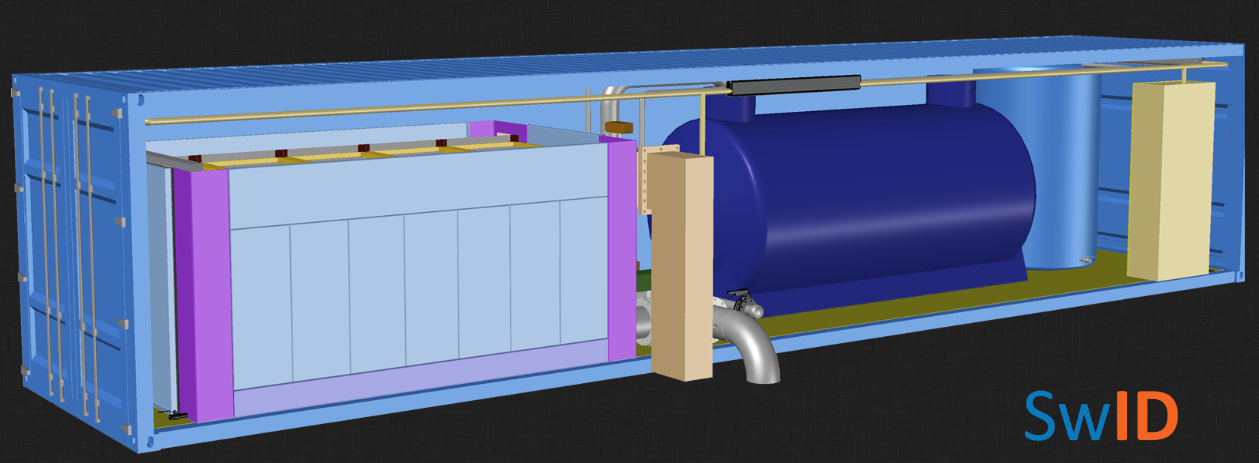SWID technology
SWI Group SRL
SWID technology aims to remove dissolved and undissolved, settleable and unsettleable pollutants from stormwater flowing on large, impermeable areas, taking advantage of the adsorption properties of porous materials.
The main advantages of the system, which differentiate it from the filtration technologies already available on the Market, are the increased hydraulic efficiency, by inducing optimized and calibrated pathways for the stream, with the scope of taking advantage of the whole filtration material’s mass available in the plant, and the increased treatment efficiency, by guaranteeing an optimal contact time between water and the filtration media.
Each plant is equipped with a tank containing a series of modular filtration cases, installed vertically one on top of each other to create wheeled towers . These towers are installed in parallel configuration inside the filtration sector. On the lateral sides of the filtration sector, two horizontal, bidirectional channels for feeding and discharge are installed.
Each modular case is filled with filter media, composed by a selected mixture of highly adsorbing materials, to maximize the performance.
Each modular case is equipped, on its front and back sides, with a calibrated-pore system, in order to calibrate the entering and exiting flowrates of water and guarantee an adequate contact time between water and filtration media, thus enhancing adsorption performance and reducing headlosses.
SWID system can be managed and controlled remotely by means of a SCADA software,connected to a PLC (Programmable Logic Controller) computing system, in order to monitor and control the whole treatment process at each phase, and manage emergencies and maintenance operations.
A tank is located on the front side of the SWID plant for the storage of untreated water during maintenance, emergencies or exceptional contaminant spillovers. Another tank is available for the storage and settlement of the process sludge, collected during the cleaning process run at the end of each process cycle .
When biodegradable organic pollutants (for example, PCBs (polychlorinated biphenyls) are present in water, SWID system is integrated with a process, based on Ozone, to regenerate the filtration media through the destruction of the organic substances.

